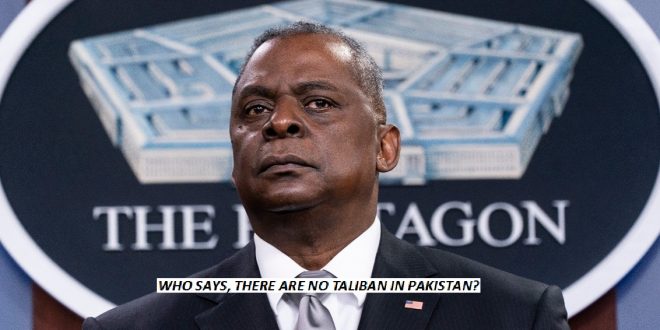18-06-2021
By SJA Jafri + Bureau Report
WASHINGTON KABUL/ ISLAMABAD: After 30 years’ continuous research, evaluation and cross-analysis on reporting, stories, news and views of Press Media of India (PMI) and one of most credible Pakistan-based English dailies known as “Messenger” regarding the Taliban’s existence mainly in Pakistan, “Shia target killing especially ‘girls and young women’s targeting’, enforced disappearance, kidnapping, abusing, slaughtering, torturing and suspicious missing and abducting” as well as other regions of the globe and dozens of other anti- Shia terrorist organizations like al-Qaeda, Boko Haram, Lashkar-e-Jhangwi (LeJ), Sipah-e-Sahaba Pakistan (SSP), Islamic State of Iraq and Syria (ISIS), Mujahideen-e-Khalq (MeK), Jaish-e-Muhammad (JeM), Lashkar-e-Tayyaba (LeT), Islamic State of Iraq and Levant (ISIL), Tehreek-e-Taliban Pakistan (TTP), Jundullah, Sajna Group and Tehreek-e-Taliban Afghanistan 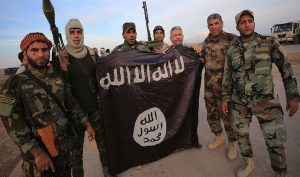 (TTA) etc and despite thousands of fake, false, incorrect even ‘opposite’ press releases, handouts, official statements as well as claims of former and present Pakistani regimes, agencies, authorities even security forces against and over realities, truth, factual situation particularly the figures and reporting of crimes and Shia target killing in Pakistan, Afghanistan, Saudi Arabia, Iraq, Kuwait, Bahrain, Syria and neighboring countries during last three decades and beside all other assertions of former and present governments and on the basis of very close critical studies in-between the reporting of above both media outlets and rest of the global media, at last, the United States of America (USA) as well as the remaining world particularly the “Immigration Authorities” of Australia, Canada, Germany, France, Italy, United Kingdom, Belgium, EU and Norway
(TTA) etc and despite thousands of fake, false, incorrect even ‘opposite’ press releases, handouts, official statements as well as claims of former and present Pakistani regimes, agencies, authorities even security forces against and over realities, truth, factual situation particularly the figures and reporting of crimes and Shia target killing in Pakistan, Afghanistan, Saudi Arabia, Iraq, Kuwait, Bahrain, Syria and neighboring countries during last three decades and beside all other assertions of former and present governments and on the basis of very close critical studies in-between the reporting of above both media outlets and rest of the global media, at last, the United States of America (USA) as well as the remaining world particularly the “Immigration Authorities” of Australia, Canada, Germany, France, Italy, United Kingdom, Belgium, EU and Norway  have not only starting to acknowledge, verified, accept, refer, consider and endorse the coverage and exposure of PMI and Messenger but also reviewing millions of declined cases and issuing fresh and pending protection visas rapidly while most of the countries have also changed their immigration rules, standards even laws entirely or partially, sources and victims told PMI and Messenger.
have not only starting to acknowledge, verified, accept, refer, consider and endorse the coverage and exposure of PMI and Messenger but also reviewing millions of declined cases and issuing fresh and pending protection visas rapidly while most of the countries have also changed their immigration rules, standards even laws entirely or partially, sources and victims told PMI and Messenger.
PMI and Messenger have already been reporting during the last thirty years that there was not only dozens of anti-Shia terrorist organizations are existence in Pakistan but especially a large number of Taliban as well as many other pro-Taliban associations like al-Qaeda, Daesh, ISIS, ISIL, LeJ, Boko Haram, JeM, MeK, LeT etc have been working independently and under the shelter of “State” or foreign support accordingly but the “Immigration Authorities” of the world mainly extremely immature, illiterate, uneducated, inexperienced, abnormal, so-called modern, civilized and developed “Australian Government (s)” have been believing, considering, referring, presenting and accepting on fake, false and incorrect (absolute opposite) Pakistani press releases, handouts and official statements and, now, ultimately, they all are not accepting that there were Taliban in Afghanistan as well as Pakistan but they also still exist in both countries while the other pro-Taliban (anti-Shia) groups principally al-Qaeda may be reorganized in Afghanistan and Pakistan within two years and they may hit their targets worldwide, experts, specialist, intellectuals, aggrieved persons, officials and sources question that “who says, there is no existence of Taliban in Pakistan?”
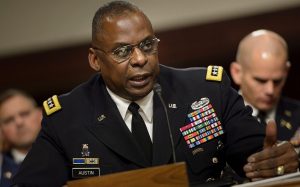 An extremist group like al-Qaeda may be able to regenerate in Afghanistan and pose a threat to the US homeland within two years of the American military’s withdrawal from the country, the Pentagon’s top leaders said Thursday.
An extremist group like al-Qaeda may be able to regenerate in Afghanistan and pose a threat to the US homeland within two years of the American military’s withdrawal from the country, the Pentagon’s top leaders said Thursday.
It was the most specific public forecast of the prospects for a renewed international terrorist threat from Afghanistan since President Joe Biden announced in April that all US troops would withdraw by Sept. 11.
At a Senate Appropriations Committee hearing, Sen. Lindsey Graham, R-S.C., asked Defense Secretary Lloyd Austin and Gen. Mark Milley whether they rated the likelihood of a regeneration of al-Qaeda or the Islamic State group in Afghanistan as small, medium or large.
“I would assess it as medium,” Austin replied. “I would also say, senator, that it would take possibly two years for them to develop that capability.”
Milley, the chairman of the Joint Chiefs of Staff and a veteran of the war in Afghanistan, said he agreed.
“I think that if certain other things happen if there was a collapse of the government or the dissolution of the Afghan security forces that risk would obviously increase, but right now I would say ‘medium’ and about two years or so,” Milley said.
Their responses underscored the overall military fears about the consequences of a complete, unconditional withdrawal. Military leaders over the past few years have pushed back against administration efforts including at times by then-President Donald Trump to pull out of Afghanistan by a certain date, rather than basing troop numbers on the security conditions on the ground.
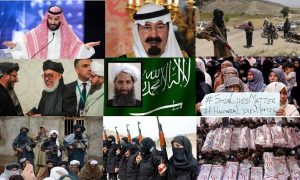 Milley also acknowledged that a collapse of the government or takeover by the Taliban could have broader impacts on the strides women have made in Afghanistan and the military has said it will be far more difficult to collect intelligence on terror groups in the country, if there is no American presence there.
Milley also acknowledged that a collapse of the government or takeover by the Taliban could have broader impacts on the strides women have made in Afghanistan and the military has said it will be far more difficult to collect intelligence on terror groups in the country, if there is no American presence there.
Once the withdrawal is completed, US military and intelligence agencies’ ability to monitor and counter extremist groups inside Afghanistan will be limited, but the Pentagon says it will use “over-the-horizon” forces to keep a lid on the threat. The hope is to place surveillance aircraft and other assets in one or more neighboring countries, but no such arrangements have yet been made. That means the counterterrorism effort will have to be conducted from bases farther away, in the Persian Gulf area.
A related concern is that the Taliban, which are seeking greater political leverage in Kabul and could attempt to take power, may retain its associations with al-Qaeda, whose presence in Afghanistan was the reason the US invaded in the first place. US officials have questioned whether the Taliban will fulfill a promise made in a February 2020 agreement with the Trump administration to disassociate itself from al-Qaeda and to prevent any extremist group from launching attacks on the US from Afghan soil.
The Biden administration has acknowledged that a full US troop withdrawal is not without risks, but argued that waiting for a better time to end US involvement in the war is a recipe for never leaving, while extremist threats fester elsewhere.
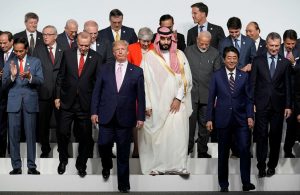 “We cannot continue the cycle of extending or expanding our military presence in Afghanistan, hoping to create ideal conditions for the withdrawal, and expecting a different result,” Biden said, when announcing the withdrawal plan in April. He added, “It’s time to end America’s longest war.”
“We cannot continue the cycle of extending or expanding our military presence in Afghanistan, hoping to create ideal conditions for the withdrawal, and expecting a different result,” Biden said, when announcing the withdrawal plan in April. He added, “It’s time to end America’s longest war.”
The US invaded Afghanistan after the Sept. 11, 2001, terror attacks on America, when the Taliban allowed al-Qaeda safe haven in the country. The key goal of US and coalition troops in Afghanistan since then has been to prevent resurgence and another attack against America or other allies.
Military leaders have consistently said that combat operations in Afghanistan have greatly reduced the number of al-Qaeda there but they say that both al-Qaeda and IS continue to aspire to attack America.
Austin and Milley’s warnings about a possible resurgence of terrorist groups in Afghanistan echo those of some outside analysts.
A group of experts on Afghanistan, including retired Gen. Joseph Dunford, who served as the top commander in Afghanistan before becoming chairman of the Joint Chiefs of Staff in 2015, said in a report published in February that a “precipitous withdrawal” from Afghanistan could lead to a reconstitution of the terrorist threat to the US homeland within 18 months to three years. The group, whose study was mandated by Congress, said the US should keep troops in Afghanistan until tangible progress is made toward a peace settlement between the Taliban and the Afghan government.
The Pentagon has said the US withdrawal after nearly 20 years in Afghanistan is a little more than half completed, and US-led coalition partners also are leaving.
 Pressmediaofindia
Pressmediaofindia
